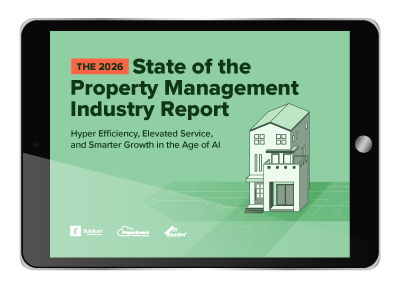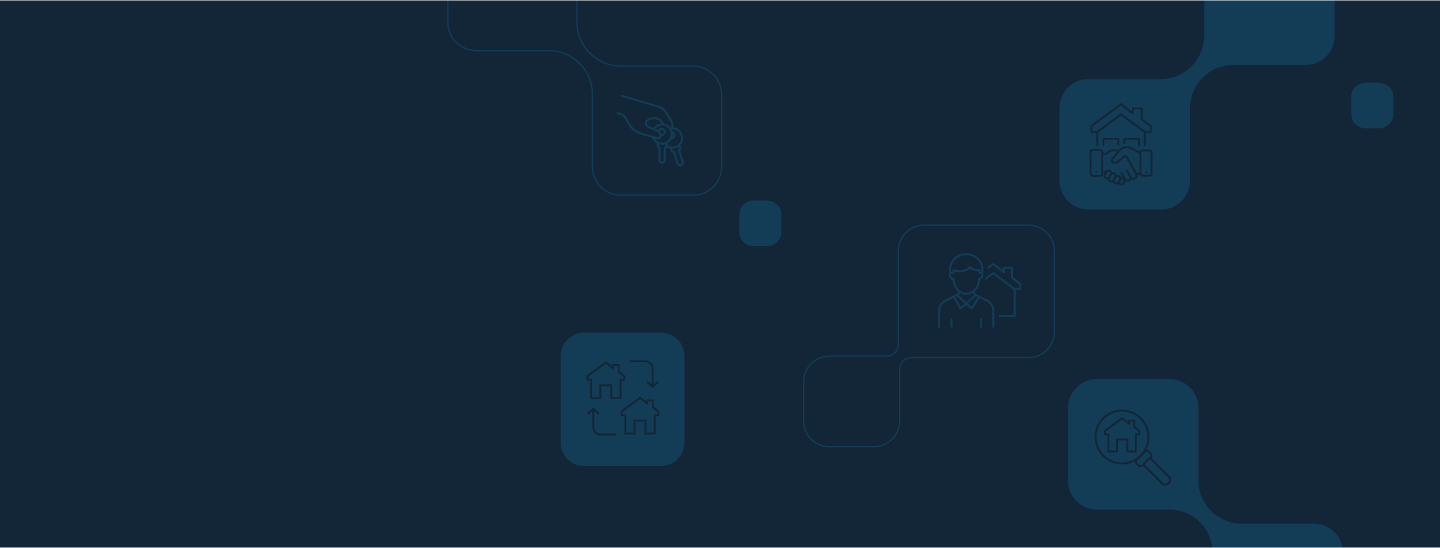If you’re renting out your property, it’s only a matter of time before you’ll need to make an emergency repair, conduct a routine inspection, or invest in preventative maintenance. It’s a part of the job that protects your property, keeps it a safe and attractive option for renters, and all too often, takes up a hefty portion of your management time.
Because maintenance is such an important and constant responsibility for landlord’s, it pays to have software that can help lighten the load. This guide explores the ins and outs of rental property maintenance software for landlords and walks you through how to select a platform that gives you the most value over time.
What Is Rental Property Maintenance Software?
Rental property maintenance software helps landlords manage property repairs, track work orders, and schedule routine upkeep from one central platform. This software automates maintenance tasks and keeps all property maintenance records organized in one place.
Key Features of Maintenance Software
Maintenance software includes key features that help landlords manage properties more effectively:
Core Management Features:
- Work Order Management: Create, assign, and track repair requests with detailed specifications and completion dates. T
- Scheduling: Automated reminders for routine maintenance like HVAC inspections and pest control.
- Vendor Management: Database of trusted contractors with performance tracking and task assignment.
- Inventory Tracking: Monitor maintenance supplies and generate alerts for restocking.
- Communication Tools: Direct messaging between landlords, tenants, and maintenance staff.
- Data Capture and Reporting: Comprehensive reports on maintenance costs, performance, and trends.
- Mobile Access: Smartphone and tablet apps for on-the-go management and updates.
Keep a list of these features during your search, but also take the time to understand how each works in action to directly benefit the communities you manage:
- Work Order Management: The ability to quickly create, assign, and track work orders for repairs and maintenance tasks is at the core of landlords’ maintenance responsibilities. Maintenance software allows landlords to speed up this process by creating detailed work orders that specify the nature of the task, the assigned vendor or maintenance staff, the expected completion date, and any relevant notes or instructions. This keeps all parties on the same page and that tasks are completed efficiently.
- Scheduling: By scheduling these tasks in advance, landlords can check that they are performed regularly and on time, preventing small issues from becoming major problems. The software can send alerts to both landlords and maintenance personnel, keeping them aware of upcoming tasks.
- Vendor Management: Keeping a database of trusted vendors is the best way to assign work orders to the right teams quickly. Maintenances software allows landlords to store contact information, track performance, and assign tasks based on vendor expertise. This feature helps landlords quickly find the right professional for each job, reducing downtime and recording both high and low-quality work.
- Inventory Tracking: Maintaining a detailed record of maintenance supplies and equipment helps landlords avoid shortages and stock up on the necessary materials on hand for repairs. Software can track inventory levels, send alerts when supplies are low, and generate purchase orders for restocking. This helps landlords manage their resources effectively and reduce the time spent waiting for materials to arrive.
- Communication Tools: Effective, speedy communication between landlords, tenants, and maintenance staff is important if you want to avoid lengthy repairs and frustrated renters. Maintenance software offers tools such as messaging systems, email notifications, and mobile apps that make clear and timely communication possible. Tenants can report issues directly through the software, and landlords can provide updates on the status of repairs.
- Data Capture and Reporting: Keeping your records in one place and being able to generate comprehensive reports on maintenance activities, costs, and performance helps landlords make informed decisions about who to hire and how what units or maintenance activities to focus. The software can create detailed reports that include information on completed tasks, outstanding work orders, labor and material costs, communication and track records of vendors, and overall maintenance performance. These reports can be used to identify trends, budget for future expenses, and, over time, improve the efficiency of maintenance operations.
- Mobile Access: Repair work doesn’t happen from behind a desk, which means you’ll need to be able to access your software on the go. Mobile apps are the best way to achieve this. Landlords and maintenance staff can use smartphones or tablets to access the software, update work orders, communicate with tenants and vendors, and track inventory levels. Tenants should also have access to an app that lets them communicate with you and receive updates as needed. This flexibility allows for quick responses to maintenance issues and faster completion times, regardless of location.
Benefits of Using Maintenance Software
Using maintenance software delivers five key benefits:
Improved Efficiency
Landlords can streamline their workflow by centralizing maintenance tasks within one platform. This reduces the time spent on administrative duties and allows landlords to focus on more important aspects of property management.
Cost Savings
Effective management of maintenance activities can prevent costly repairs and prolong the lifespan of property assets. Tracking expenses and generating reports help landlords identify areas where they can cut costs and optimize their budget.
Enhanced Communication
Clear communication between landlords, tenants, and maintenance staff helps speed up repair work and keep your tenants happy and in the loop. It’s the best way to spot problems quickly and make renters feel taken care of.
Accountability
With maintenance software, landlords can monitor the progress of jobs, work order histories, and their overall track record with contractors. They’ll know which vendors to trust for which job, insight that becomes invaluable when tackling emergency repairs. This accountability helps maintain high standards of property upkeep and tenant satisfaction.
Accessibility
Mobile access to maintenance software means landlords can manage tasks from anywhere, whether they’re on-site or away. Having flexible, mobile-friendly software is particularly helpful for jobs that you need to move fast on and for landlords that want to expand their portfolios while staying efficient from anywhere.
Choosing the Right Property Maintenance Software for Landlords
When choosing maintenance software, evaluate these six key factors:
Ease of Use
The software should have an intuitive interface that makes it easy to navigate and use. Landlords and staff members should be able to quickly learn how to operate the system without extensive training.
Customization
Every property has unique maintenance needs. Look for software that allows customization to accommodate the specific requirements of your properties.
Integration
Maintenance software should integrate seamlessly with other property management systems you may be using. This integration helps consolidate all property-related tasks into one cohesive platform.
Support and Training
Reliable customer support and training resources are crucial for addressing any issues that may arise. Choose a software provider that offers robust support options.
Reviews and Recommendations
Read reviews and seek recommendations from other landlords to gauge the effectiveness and reliability of different software options. Real-world experiences can provide valuable insights into the software’s performance.
Cost and Pricing Considerations
Software pricing varies from per-unit charges to flat monthly rates. Look beyond the base price for hidden costs like setup fees, support charges, and additional user fees.
Implementing Your Software Platform Effectively
Once you’ve chosen the right maintenance software, it’s time to implement it effectively. Here are some steps to get started:
Set Up the Software
Begin by setting up the software according to your property’s specific needs. Customize settings, input property details, and create user accounts for staff members.
Train Your Staff
Provide training for staff members to get them comfortable with using the software. Utilize training resources provided by the software provider.
Communicate with Tenants
Inform tenants about the new maintenance system and how they can report issues. Clear communication helps tenants understand the process and encourages timely reporting of maintenance needs.
Monitor and Adjust
Regularly monitor the software’s performance and make adjustments as needed. Stay proactive in addressing any issues and optimizing the system for maximum efficiency.
Getting Started With Property Maintenance Software
Rental property maintenance software offers a straightforward set of tools to tackle any repair challenge that comes your way. By choosing the right software and implementing it effectively, landlords can improve efficiency, save costs, and maintain the high standards needed to get the most out of any property investment.
If you’re ready to start exploring specific options, we recommend giving Buildium’s maintenance features and comprehensive property management platform a spin with a free, 14-day trial or a guided demo.
Frequently Asked Questions About Property Maintenance Software
What’s the Difference Between Property Maintenance Software and Full Property Management Software?
Property maintenance software focuses only on repairs and work orders, while full property management software includes maintenance plus accounting, leasing, and rent collection. Full platforms like Buildium handle your entire business operations.
Do I Need Technical Skills to Use Property Maintenance Software?
No technical skills are needed – most platforms are as easy to use as smartphone apps. Companies typically provide training and support to help you get started.
Can Property Maintenance Software Work for Just a Few Rental Units?
Many maintenance tools can be used by small teams with no formal unit minimums, but some vendors target larger portfolios or impose minimum monthly fees that make very small portfolios less economical. Look for flexible pricing that grows with your business.
How Long Does It Take to See Results After Implementing Maintenance Software?
Expect early wins within weeks to one quarter (1–3 months) if adoption is strong, with broader efficiency gains often becoming clearer over the following 3–6 months.
Read more on Maintenance

